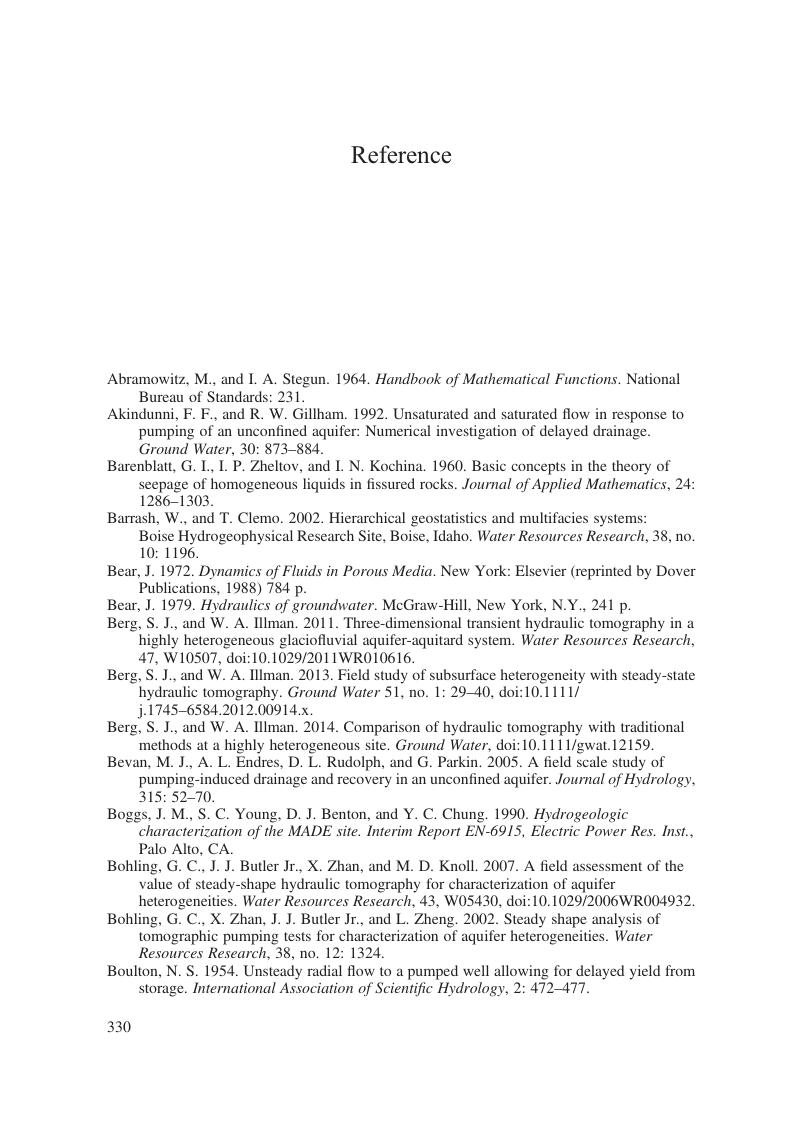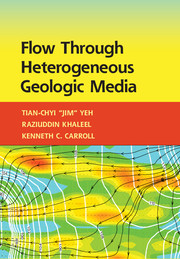Book contents
- Frontmatter
- Contents
- Preface and Acknowledgments
- 1 Fluid Statics and Dynamics
- 2 Darcy's Law for Saturated Porous Media
- 3 Darcy's Law for Unsaturated Porous Media
- 4 Stochastic Conceptualization of Heterogeneity
- 5 Governing Flow Equations for Heterogeneous Media Conceptual Models
- 6 Equivalent Homogeneous Media Conceptual Models
- 7 Flow toward a Well Due to Pumping (Part 1)
- 8 Flow toward a Well Due to Pumping (Part 2)
- 9 Stochastic Approaches
- References
- Index
- References
References
Published online by Cambridge University Press: 05 July 2015
- Frontmatter
- Contents
- Preface and Acknowledgments
- 1 Fluid Statics and Dynamics
- 2 Darcy's Law for Saturated Porous Media
- 3 Darcy's Law for Unsaturated Porous Media
- 4 Stochastic Conceptualization of Heterogeneity
- 5 Governing Flow Equations for Heterogeneous Media Conceptual Models
- 6 Equivalent Homogeneous Media Conceptual Models
- 7 Flow toward a Well Due to Pumping (Part 1)
- 8 Flow toward a Well Due to Pumping (Part 2)
- 9 Stochastic Approaches
- References
- Index
- References
Summary

- Type
- Chapter
- Information
- Flow through Heterogeneous Geologic Media , pp. 330 - 340Publisher: Cambridge University PressPrint publication year: 2015



